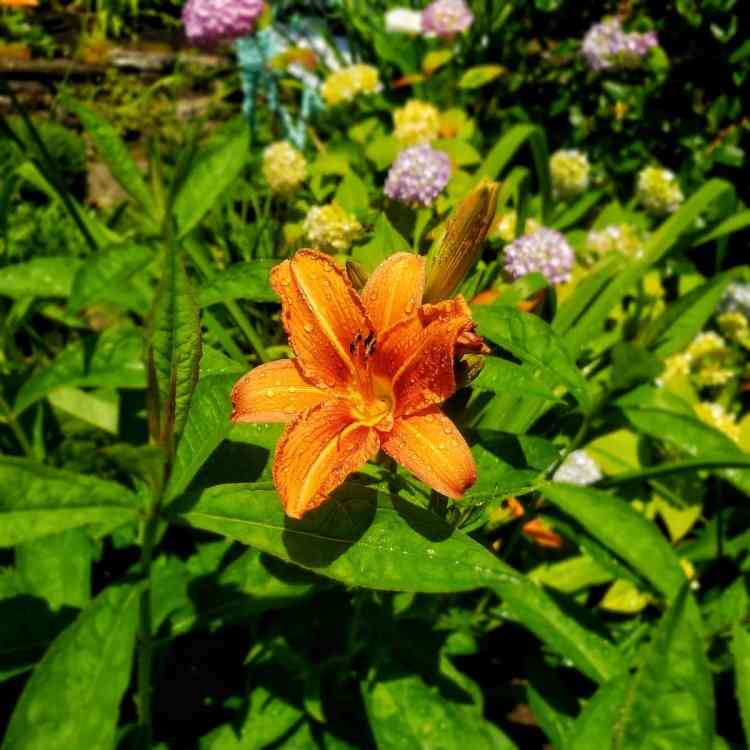
Native to Japan, China and Korea, the daylily, otherwise known as Hemerocallis, is an extremely versatile plant that will add a bright burst of color to just about any garden or landscape. The name Hemerocallis stems from the Greek lexicon and means “one day beauty” because each bloom only lasts for a day, however, with a bit of advanced planning, you can create a daylily landscape that blooms all season long.
Daylilies are an excellent selection for the part-time gardener as they are extremely resistant to pests and diseases, are tolerant of poor soil, heat and drought and require only a small amount of maintenance. The first thing to keep in mind when preparing to plant daylilies is that their bloom periods are so short.

Flowers appear atop stalks that may be up to seven feet tall, then soon fade and are replaced by another flower on another stalk. This cycle is completed quickly.
Some daylilies, called re-bloomers, will flower in the spring and fall, when outdoor temperatures are lower, but will be dormant during the hot, summer months.
To create a daylily bed that flowers throughout the spring and summer, ask your local nursery owner or botanist what early-, mid- and late-season bloomers they’d recommend for your area. The orange ‘Stella de Oro” daylily, more commonly known as “ditch lily,” and the yellow ‘Happy Returns’ are two of only a handful of daylilies that bloom all season long.
Below is a brief guide for some of the other colors, though bloom times may vary a bit depending upon your location.
Hot Pink to Purple Daylilies
Early: ‘Little Wine Cup’
Mid: ‘Chicago Apache’
Late: ‘Chicago Apache’
Light Pink Daylilies
Early: ‘Antique Rose’
Mid: ‘Fairy Tale Pink’
Late: ‘Fall Fancy’
Peach Daylilies
Early: ‘Chippewa Bride’
Mid: ‘Chippewa Bride’
Late: ‘Peach Mandelynne’
Though the flowers are short-lived, the grassy leaves, depending on species location, may range from being deciduous to evergreen, also providing year-round color in many locations.
Plant daylilies where they can get at least eight hours of sun per day. They prefer average to rich soil, but will tend not to flower as well if the soil is too rich, that is, if there is too much organic matter in the soil, so go easy on the use of compost and other high-nitrogen soil amendments.
Dead head as necessary to encourage new blooms and also remove spent stalks. Although there are thousands of different types of daylilies, all but about 15 of them are hybrids, which means that saving and planting their seeds will not produce a daylily that resembles the one from which the seeds were taken.
Rather than saving seedpods for reproduction, throw them away and divide daylily clumps in the early spring or fall.
Because of the grassy appearance of the leaves and the brightness of the blooms, daylilies will provide extra interest to your garden if you keep texture and color in mind while deciding what plants will surround them. Planting daylilies in front of tall grasses such as ‘Miscanthus spp.’ will give a breezy, natural look.
If you prefer something a bit more formal, try planting bright blooming daylilies in purples, pinks or yellows behind ground-hugging, light- or white-flowering vinca. Another nice combination would be to use pale or pink daylilies in front of silvery or blue evergreens like blue spruce. Daylilies also make a nice complement to backyard ponds and swimming pools.
As colorful additions to any landscape, daylilies are easy to plant, grow and maintain. They are resistant to many of the pest, disease and weather plagues that tend to make more fragile flowers fall by the wayside in the hot summer months and, with a bit of advanced planning, can be a pivotal element in your garden’s year round appeal.
Leave a Reply